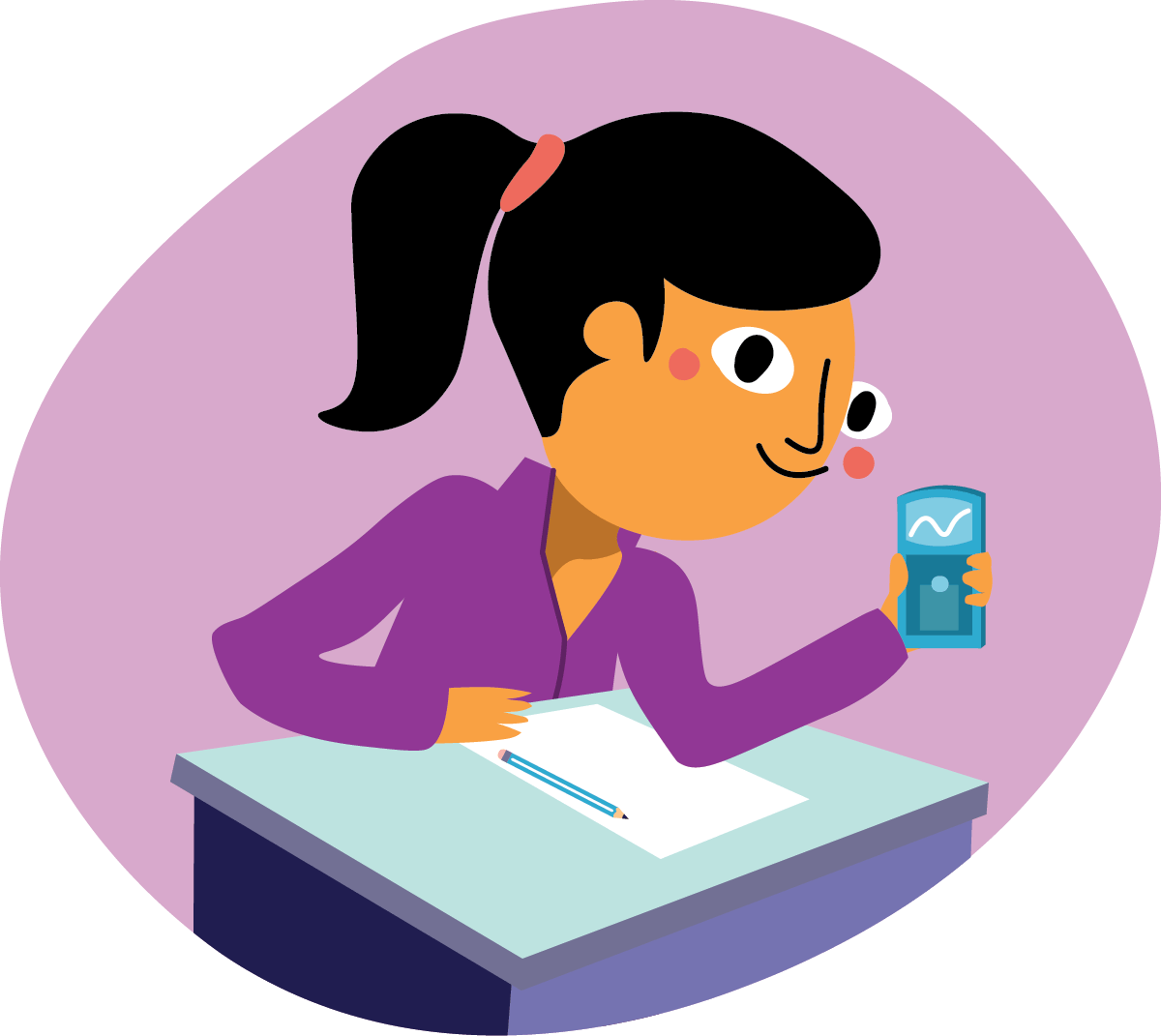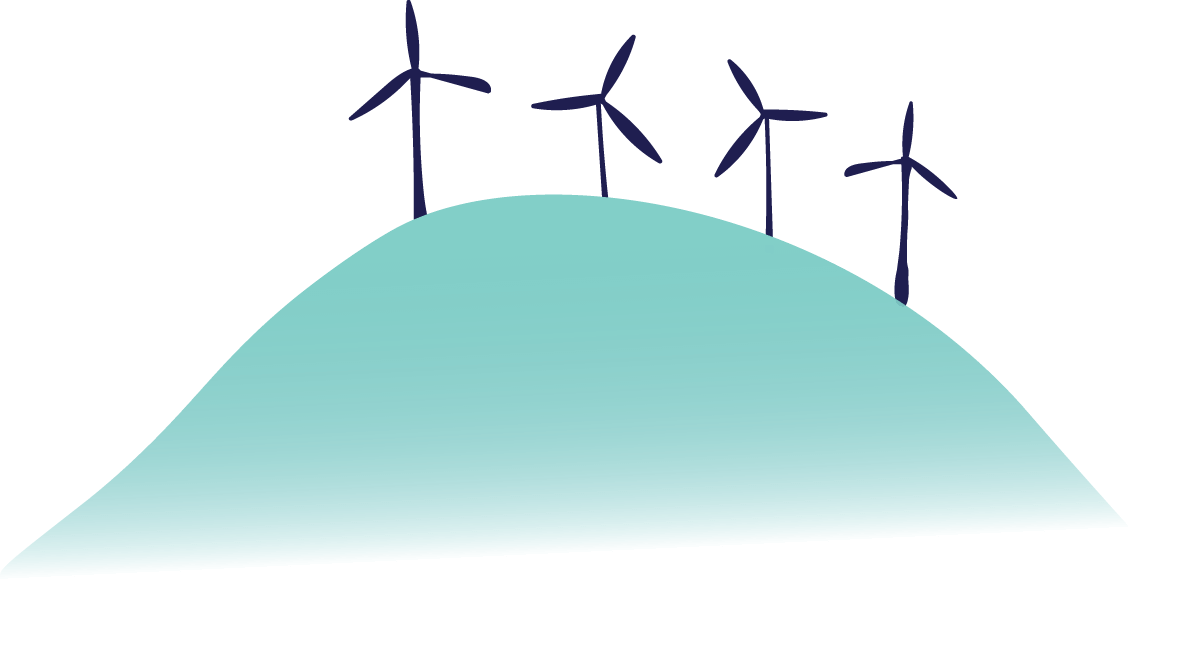Data tells a story about how our community is supporting our kids.
Below, you will find a data on key educational milestones that tell a story about what resources are available, and what are missing, to support young people. Compiled by the Center for Educational Effectiveness, these dashboards feature data on students across all Spokane County school districts.
We believe every child should have the opportunity and support to travel their best journey to career attainment in our region.
Examine this data, then join our community mission to support all children in our region. As a collective, we can break down barriers keeping students from pursuing the career and future they choose.
Kindergarten Readiness
What does it mean for our kids and our community to be kindergarten ready?

Here is data on how many students enter kindergarten ready to learn in Spokane County.
WaKIDS, the Washington Kindergarten Inventory of Developing Skills, includes an assessment (WaKIDS Whole-Child Assessment) that is administered during the first two months of kindergarten. Teachers observe students across six areas of development and learning: Social-Emotional, Physical, Language, Cognitive, Literacy and Math (1).
LaunchNW facilitates the Birth to Five Task Force alongside co-chairs from Vanessa Behan, The Learning Project Network and the Spokane Regional Health District. This task force brings together early childhood education providers, nonprofit partners and parents from across the community to design an innovative pilot program expanding supports for families raising young children from birth to five years old.
To gain a deeper understand of the greatest challenges facing families, the task force co-chairs began their work this summer by centering the voices of those most impacted: parents and guardians. Task force co-chairs have already hosted 7 community listening sessions, including partnering with Spokane Fatherhood Initiative, as well as Thrive International to hear directly from refugee families.
With an inspiring commitment to getting this work right, this task force is convening actively to identify innovative opportunities to expand resources, gain insight and understanding of what families need to thrive, and to ignite collective action across Spokane to support children and families.
Kindergarten readiness assessments like the WaKIDS Whole-Child Assessment enable families, schools, districts, and policymakers to come together around developing prepared and enabled students in early education. Early learners who are on track in math and literacy will have greater success in later grades (3, 4, 5), and some early skills levels can even predict high school grades (3).
Kindergarteners on track in math and social-emotional skills are also more likely to graduate high school and tend to benefit from better health and wealth than their counterparts in the long-run (3,7).
Early Math:
Success in early education will impact educational success in later grades (3,4,5). One notable study that followed 966 Canadian students from kindergarten through age 17 found that strong kindergarten math skills are associated with better high school grades (3). This correlation is substantiated by Duncan et al.’s meta-analysis of six datasets representing thousands of students. Within this study, researchers found that early math skills are predictive of later learning success in many areas (5). Poor early math skills have also been shown to predict dropping out of high school (3).
Early Literacy:
In the perspective of literacy, disparities between strong readers and poor readers may originate at an early age and grow over time. The Matthew effect, a phenomenon where proficient readers read more and expand their skills while poor readers experience stagnation, describes a situation in which a student entering kindergarten without literacy readiness may find themselves struggling for years without proper intervention (6).
Early reading skills can also predict grades later in elementary school, as students are expected to have basic literacy by the end of 3rd grade (4).
Social-Emotional Skills:
The development of social emotional skills at an early age is an incredibly vital predictor of future health, wealth, and other holistic measures of well-being (3,7). The development of healthy social emotional attributes equips students with the acumen needed to navigate scholastic expectations and to develop interpersonal relationships with peers and teachers, which subsequently allows them to benefit from day-to-day education (8). Certain facets within the realm of socio-emotional learning are particularly important to academic success.
For example, Rabiner et. al (2016) find that attention problems in first grade decrease the probability of a student graduating high school (4). Classroom engagement skills are also predictive of future success in many areas: “Children’s kindergarten classroom engagement was a consistent predictor of high school outcomes predicting academic achievement, dropout risk, school connectedness, substance use, physical activity, and weight status” (3).

3rd Grade Reading
When students read at grade level in 3rd grade, it is an important indicator for their future.

Students achieving proficiency on 3rd grade SBAC ELA
The percentage of students who score a 3 or a 4 and meet state standards on the Smarter Balanced Assessment System 3rd Grade Language Arts Exam.
Prevailing curriculum in the United States works on the assumption that students achieve reading proficiency by the end of their 3rd grade year (2). Looking at this measure at an early age helps educators focus their efforts and allocate resources towards helping students catch up to peers, rather than allowing them to fall behind over time (2).
Reading proficiency in third grade serves as an early predictor of high school graduation.
One study of nearly 4000 students finds that 1 in 6 children who are not reading proficiently in third grade fail to graduate from high school on time (3). Among this group, students who are experiencing poverty and lack reading proficiency are three times more likely to drop out of high school than those who have never lived in poverty (3).
Furthermore, poor reading comprehension often persists throughout a student’s academic journey. A 1997 study at Yale University found that “three-quarters of students who are poor readers in third grade will remain poor readers in high school” (2). Poor reading comprehension in young students also correlates with behavioral issues in later grades (4).
State-level SBAC ELA results show significant disparities in ELA achievement among different student groups. The Washington State Report Card data portal reports that among all student grade levels, subgroups like low-income students (34%) and black students (34.7%) met standards on the ELA exam at notably lower rates than their counterpart student groups statewide (5).
ELA achievement and COVID-19:
The Covid-19 pandemic affected and continues to affect students in all walks of their journey. According to a report created by an independent educational advisory group, Covid-19 slowed learning growth of reading comprehension in 2-7 grade students after experiencing school closures in spring of 2020 (6).
Several studies argue that the impacts of Covid-19 may have a long-term scope for students affected, since learning loss is difficult to correct for and can cause exponential effects later in life as students fail to “catch up” to other peers and standards. McKinsey and Company (2021) find that “without immediate and sustained interventions, pandemic-related unfinished learning could reduce lifetime earnings for K–12 students by an average of $49,000 to $61,000” (7).
Attendance
Students who attend school for at least 90% of the school year, chronic absences, and the impact lasting long beyond K-12.

Here is a snapshot of what student attendance looks like across Spokane County.
LaunchNW has convened an Attendance Working Group to address the challenges and provide solutions to support families and promote regular school attendance. The working group is comprised of leaders from key partners across Spokane County, including NEW ESD101, West Valley School District, Spokane Public Schools, and Nuestras Raíces. Over the next few months, the working group will engage in listening sessions with community members, identify and implement evidence-based initiatives to boost attendance, and evaluate the impact of those initiatives.
Consistent attendance is vital to academic success because it allows students to benefit from teacher instruction and peer interaction.
This measure is a positive indicator of student achievement measures like GPA and standardized testing scores (1,2). Moreover, studies reveal that high rates of absenteeism serve as a strong predictor of dropping out (3,4), with one study in particular finding that within a group of 8th graders that attended school less than 80% of the time, 78% later became high school dropouts (3).
As research-backed education policy begins to move away from using standardized testing as a predictor of student success, measures like consistent attendance gain prominence. Allensworth et al. (5) find that middle school grades and attendance are stronger predictors of high school and postsecondary success than indicators like test scores, race, or poverty.
Chronic Absence:
Chronic absence refers to a student missing more than 10% of enrolled days for any reason (6). Experiencing chronic absence in high school is correlated with lower math and reading achievement and reduced academic and social engagement (7). A report created by the National Center for Children in Poverty reveals that chronic absence in kindergarten, particularly among disadvantaged children, predicts the lowest levels of educational achievement by the end of fifth grade (8). Students from economically disadvantaged backgrounds suffer the most severe consequences of chronic absence, as their families often lack resources to compensate for missed classroom time.
Attendance and Postsecondary Attendance:
Consistent attendance holds significance not only for K-12 achievement but also for postsecondary success. Credé et al. (2010), found in a comprehensive meta-analytic review that attendance correlates strongly with both individual course GPA as well as overall college GPA (9). Using data from over 28,000 students, this study found that attendance exhibited a stronger relationship with postsecondary achievement than indicators like high school GPA, SAT scores, or even hours spent studying (9).
Students who build good attendance habits early in their academic journey will continue to reap the benefits of attending class even in postsecondary education.

Algebra II by Junior Year
Passing Algebra II by the junior year of high school is an important measure telling us about college & beyond.

The percentage of students who pass Algebra II by their junior year of high school.
Post-secondary institutions develop curricula that assumes students take 3-4 years of math instruction in high school, and many even expect students to enter their freshman year with advanced math courses under their belt.
Algebra 2 is an important milestone in high school because it functions as a pre-requisite to advanced mathematics courses like pre-calculus and calculus. For students considering a career in STEM specifically, the completion of Algebra 2 by junior year of high school ensures that they are prepared for post-secondary mathematics tracks, many of which begin with Calculus I or II freshman year.
The completion of Algebra 2 in high school is also a predictor of college enrollment (1,2,3), and students who take advanced mathematics courses in high school are more likely to successfully complete a degree (1) and find a well-paying vocation later in life (5,6,7).
Algebra 2 and College:
The completion of Algebra 2 in high school is a robust predictor of college readiness and enrollment (1,2,3). Courses taken after Algebra 2 (trigonometry, pre-calculus, calculus) are generally considered “advanced math” courses, and their completion is gaining prominence as a pre-requisite for acceptance into more selective colleges. Advanced math course-taking in high school is also a key indicator of college-going momentum. One study of class of 1992 graduates found that there were significant differences in college enrollment for student groups who participated in differing levels of math: “Among those who took advanced mathematics in high school, about three-quarters (76 percent) enrolled in college by 1994. The enrollment rate dropped to 44 percent for those who took middle-level mathematics (Algebra 2), to 16 percent for those who took only algebra and geometry, and to 6 percent for those whose completion level was lower than algebra and geometry” (1).
Students who take advanced math in high school are more likely to be on track for success, while those who don’t may find themselves behind in college (4). One study of students at a community college in the mid-Atlantic region of the U.S. found that students who completed a math course above Algebra 2 in high school were 74.0% less likely to enroll in a developmental course compared to students who reported their highest math level as Algebra 2 (4).
Algebra 2 and Earnings:
Taking advanced math courses is also correlated with higher earnings later in life (5,6,7). If students who take advanced math in high school are more likely to attend and successfully complete college, then they are already ahead of their peers in the likelihood of finding a well-paying job. Goodman (2017) finds that growth to required math curriculum at high schools in the U.S. increased the number of black students participating in advanced math courses (goodman).
As a consequence of this policy change, this student group saw growth in their earnings later in life. Taking advanced math courses in high school is additionally associated with a lower probability of receiving public assistance after graduation (8).
College Ready GPA by Senior Year
Students who hold at least a 2.5 cumulative GPA throughout their high school experience and into their senior year.

The percentage of senior year students who hold at least a 2.5 cumulative GPA throughout their high school experience and into their final year of class.
Many post-secondary institutions use high school GPA as a criterion to assess applicants’ eligibility for admission, financial aid, and scholarship packages. Within this evaluation process, many institutions set a minimum GPA score of 2.5, resulting in disqualification for applicants with a cumulative GPA below this threshold.
Students who achieve a cumulative GPA of 2.5 or higher by their senior year of high school are more likely to graduate high school and enroll in a post-secondary program (1,2). Furthermore, seniors with a 2.5 GPA are also more likely to complete a post-secondary program successfully and reap the monetary benefits of doing so (3,4,5).
GPA and College Readiness:
Teacher-given grades are an indicator of both high school graduation (1,2) and a successful post-secondary transition (3). Using GPA as a measure of student success can be more comprehensive than relying solely on standardized testing, as it considers habits like class participation, attendance, and organization, rather than just looking at learned knowledge. Minimum GPA requirements in high school are often tied to graduation criteria alongside specific credit requirements, establishing a causal link between GPA and high school graduation. Additionally, GPA scores are frequently used to determine which students qualify for advanced or college preparatory courses, known to enhance college readiness.
GPA as a Risk Factor of Dropping Out:
Low grades are also predictive of dropping out of high school and are among the most significant risk factors, alongside grade retainment (2). A study examining non-cumulative GPA for 1st-12th grade students at two school districts in the U.S found that 86% of the students who received grades in the lowest category (0-1.5 GPA) did not graduate on time (2). Students with low cumulative GPAs in their senior year may perceive too little time for improvement before graduation and may consider dropping out as a seemingly easier option.
GPA and College Success:
GPA also serves as a reliable indicator of post-secondary performance (3,4,5). A study of over 4,000 college students found that high school GPA was the most influential single predictor of college GPA, irrespective of variations in grading standard across schools (4). College GPA itself can impact academic opportunity because scholarship funding is often contingent on maintaining certain grades, so the impact of high school GPA goes much farther than graduation.
Furthermore, in the realm of post-college endeavors, GPA retains its substantial role as an indicator of success. Employers frequently utilize college GPA as a screening criterion for entry-level opportunities. Attaining a higher college GPA can enhance one’s access to a diverse array of professional opportunities, thereby expanding their career trajectory and potentially influencing their compensation. In fact, French et al. (2015) propose that high school GPA is a significant predictor of earnings in adulthood (6), further underscoring the importance of this measure.

FAFSA Completion
Students completing the Free Application for Federal Student Aid (FAFSA), which unlocks financial aid and scholarships for post-high school education programs.

Here is the data on completion of the Free Application for Federal Student Aid (FAFSA), which unlocks financial aid for post-high school education programs.
Completing the Free Application for Federal Student Aid (FAFSA) is not only essential for students to access federal financial aid but also opens doors to state and institution-level grants, loans, work-study opportunities, and need-based scholarships. Seniors who successfully submit the FAFSA are 84% more likely to enroll immediately in postsecondary education, with this likelihood increasing to a significant 127% for students in the lowest socioeconomic quintile (1).
Despite offering a generous financial aid program, Washington State ranked 49th out of 50 states in FAFSA completion rates in 2022 (3). Disparities in FAFSA completion disproportionately affect low-income and first-generation students, hindering their pursuit of higher education and potentially perpetuating generational limitations in accessing financial aid resources (4,5). Various factors, including misconceptions about affordability, eligibility, and a lack of information, contribute to students and families not completing the FAFSA, as reported in several wide-spanning surveys (7,8).
Why measure?
When students complete a Free Application for Federal Student Aid (FAFSA), they not only unlock the ability to be considered for federal financial aid but open themselves to aid like state and institution-level grants, loans, work-study opportunities, and need-based scholarships. According to the National College Attainment Network, seniors who successfully submit the FAFSA are 84% more likely to immediately enroll in postsecondary education, with this likelihood rising significantly to a 127% increase for students in the lowest socioeconomic quintile (1).
Our Current State:
In the state of Washington in 2017, fifty million dollars of aid went unclaimed due to low FAFSA completion rates that year (2). Washington State has one of the most generous financial aid programs in the United States with the existence of the WA Grant from the Washington Student Achievement Council, but also has one of the lowest FAFSA completion rates in the country, ranking 49th out of 50 in 2022 (3).
Disparities:
Families who struggle to complete the FAFSA are often those who would benefit the most from the opportunities it affords. Low-income and first-generation students are least likely of all student groups to complete the FAFSA, despite their potential reliance on financial aid to pursue postsecondary education (4,5). Because FAFSA completion is positively related to college enrollment (1,6), the FAFSA completion problem can often be generational.
Students lacking the necessary support systems may not complete a FAFSA or enroll in postsecondary education, thereby limiting their ability to serve as financial aid resources for their families and communities in the future. Notably, the 2013 Update of the NCES High School Longitudinal Study of 2009 revealed that 34% of Hispanic students and 27% of Black students did not complete the FAFSA due to insufficient information, compared to 18% of White students (7).
Why Don’t They Apply?
Students and families fail to complete the FAFSA for a variety of reasons. The most common reasons as reported in the 2013 Update of the NCES High School Longitudinal Study of 2009 (HSLS:09) are as follows (7):
- 33% thought they or their family could afford school or college without financial aid
- 32% thought they or their family may be ineligible or may not qualify for financial aid
- 28% did not want to take on debt
- 23% did not have enough information about how to complete a FAFSA
- 22% did not plan to continue education after high school
- 15% did not know they could complete a FAFSA
- 9% thought the FAFSA forms were too much work or too time-consuming
*Survey respondents were 18,558 students or parents of students from 944 high schools in the United States who graduated in 2013. They could check multiple options above.
Other surveys like the NPSAS 1992-1993, BPS 1995-1996, NPSAS 2007-2008, 2008 CSSEE, and 2008 FastWeb Survey corroborate similar results (8).

High School
Graduation Rates
Students who graduate from Spokane County high schools, both within four and five years.

The percentage of students graduating from high school in Spokane County, within four and five years.
While the conventional timeframe for high school completion is four years, it is crucial to acknowledge that certain student groups, such as special education students, may require additional time to complete their studies successfully.
High school graduation represents a pivotal educational milestone that influences a student’s opportunity to pursue further education or other steps to a meaningful career trajectory. Because receiving a high school diploma is necessary for many post-secondary institutions as well as for many vocational opportunities, timely graduation is advantageous for individuals in the long run (1).
Individuals who graduate high school have higher wages, higher employment rates, and better self-reported health later in life than those who drop out (2,3,4,5,6). The attainment gap is even wider between high school dropouts and those with post-secondary degrees (1,2,3,4). High school graduates also experience non-pecuniary advantages like better health, civic involvement, and job security (2,3,5).
Wages:
Even before the attainment of post-secondary education, there are gaps in achievement between students who graduate high school and students who drop out. According to the Bureau of Labor Statistics, those with a high school diploma made $183.00 more on a weekly median basis than those without one in 2021 (2). The 2023 Education Pays report from College Board shows that individuals without a high school diploma not only experience diminished earning potential compared to their peers but also encounter limited wage growth throughout their lifetimes (1,3). Amongst all households in 2021, 13% of individuals who held a high school diploma experienced poverty, while a notably larger group (27%) of those without a high school diploma experienced poverty (3).
Non-Pecuniary Considerations:
According to College Board, individuals without a high school diploma vote less, volunteer less, exercise less, and smoke more than groups who attained a high school diploma (3,6). In addition to suffering from lower wages, individuals without a high school diploma also have higher unemployment rates. In 2021, the unemployment rate for high school dropouts stood at 8.3%, exceeding the rate of their diploma-holding counterparts by more than 2% (2). Furthermore, these individuals are often deprived of the benefits associated with higher-paying jobs, such as access to health insurance, retirement planning, and paid vacation, which are more commonly available to those with advanced education qualifications (7,5).
Why Include a Measure of Five-Year Graduation Rates?
While the conventional timeframe for high school completion is four years, it is crucial to acknowledge that certain student groups, such as special education students, may require additional time to complete their studies successfully.
Consequently, the inclusion of a measure for five-year graduation rates serves to capture a more comprehensive understanding of educational outcomes and underscores the importance of accommodating diverse learning needs.

College Enrollment
What happens after high school for students in Spokane County? Here is data on enrollment in post-high school programs within one year.

The percentage of students in Spokane County who enroll in a post-high school education program within 1 year of graduating from high school.
LaunchNW aims to improve access to post-high school education in nearly all of its work, but the Mpower Mentoring Program serves as our flagship effort to meet this goal. Mpower is a coalition between 22 organizations, including local school districts, nonprofit partners, universities, and LaunchNW, and connects 11th and 12th grade students at eight local high schools with mentors supporting their journey to post-high school education. These mentors can be peers from participating high schools, near-peers from universities, or adult and family mentors from the community. This year, senior-level students participating in Mpower will be eligible to apply for the LaunchNW Scholarship, an additional support to their post-high school journey.
In addition to Mpower, LaunchNW has made focused investments to support students as they transition from high school to post-high school education. “Summer melt” refers to the tendency for students to (in the spring) intend to enroll in college/training, but don’t take the necessary actions over the summer and ultimately do not attend in the fall. In Summer 2023, LaunchNW funded staff at Spokane County high schools to work with recent graduates to keep them updated about deadlines and encourage them to follow through on their intentions to enroll in the fall.
The average inflation-adjusted cost of attending an undergraduate program has more than doubled since the 1960s (1), prompting apprehension from students and their families about the return on investment that postsecondary education can provide.
However, substantial evidence indicates that completing a post-secondary program has various financial advantages. For example, completing any form of higher education is associated with higher earnings over a person’s lifetime, with longer programs having a larger positive impact on this number (2,3,4). One study even found that pursuing a bachelor’s degree in particular is estimated to augment wages by 20 percent to 48 percent upon graduation (3).
Students who enroll in college within a year of their high school graduation are more likely to complete a degree (7,8), more likely to pursue a 4-year program (7,8), and more likely to experience higher earnings later in life than students who postpone (6).
Return on Investment:
The average cost of attending an undergraduate program has more than doubled since the 1960s (1), prompting apprehension from students and their families about the return on investment that postsecondary education can provide. However, substantial evidence indicates that completing a post-secondary program has various financial advantages.
For example, completing any form of higher education is associated with higher earnings over a person’s lifetime, with longer programs having a larger positive impact on this number (2,3,4). One study even found that pursuing a bachelor’s degree in particular is estimated to augment wages by 20 percent to 48 percent upon graduation (3).
Declining Enrollment Rates:
Since 2018, the immediate college enrollment rate, referring to the proportion of students enrolled in college by October of their graduation year, has declined from 69% to 62% (5). Among various student groups, students of lower socioeconomic status, Black students, and Hispanic students exhibit lower immediate enrollment rates than their counterparts (5). “Factors such as family resources, high school quality, academic performance, marriage, and teen pregnancy are key determinants of college enrollment timing” (6).
While students from higher socioeconomic backgrounds may opt for a gap year to engage in activities such as travel, volunteerism, and personal development, students with fewer privileges are more likely to postpone enrollment due to financial concerns or preexisting social commitments (6).
Immediate Enrollment and College Attainment:
Students who delay college enrollment are less likely to complete a degree and more likely to enroll in a 2-year rather than 4-year program (7,8). Bozick and Deluca (2005) find that students who postpone entry into college by a year or more face a 64 percent lower probability of attaining a bachelor’s degree compared to their counterparts who enroll on time, even after accounting for socioeconomic status, prior academic achievement, and other demographic characteristics (8). If delayers do enroll in a post-secondary program, they are more likely to find themselves with conflicting time interests that interrupt their studies and participation in related educational activities (7).
Considering the established benefits of participating in these activities (i.e., internships, research, and mentoring) this conflict of interest poses a significant hindrance to the educational journey of students who postpone enrollment.
Immediate Enrollment and Earnings:
Lin and Liu (2019) find in their study of nearly 7,000 students that delayers experience a minimum earnings penalty of $41,000 in the first 13 years following high school graduation, with the lifetime penalty being at least three times higher (6). The monetary value curated by participating in a post-secondary program typically manifests after degree completion, so students who enroll in college but do not graduate will not reap the return on investment that graduates will.
As students who delay college enrollment are less likely to enroll, graduate, or complete a bachelor’s program, their overall earnings trajectory over time falls significantly short of that of students who enroll in college within one year of high school graduation.

Measures by
Student Groups
Unique barriers face students with different identities. This dashboard allows you to look at outcomes for students by gender identity & race/ethnicity.

Here you can look at outcomes for students based on their identities, specifically gender identity and race/ethnicity.
We know that for a student to thrive along their journey from birth to career attainment, they must have their fundamental needs met first. This includes having access to resources that support their mental health and wellbeing. LaunchNW facilitates a Youth Mental Health and Wellness Task Force focused on improving youth mental health for students across Spokane County. Comprised of key leaders from diverse sectors across the community, the task force is in the process of identifying ways to promote youth mental health. The task force will implement evidence-based solutions across the spectrum from prevention to treatment. The first initiative will boost capacity for school-based mental health clinicians across Spokane County to support students regardless of their family’s financial circumstances.
More indicators coming soon:
-
Post-High School Opportunities by 6th Grade
-
Post-High School Programs by 9th Grade
-
LaunchNW Scholarship
-
Post-High School Education Completion
-
Job Attainment

